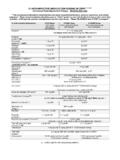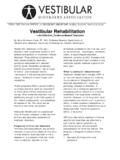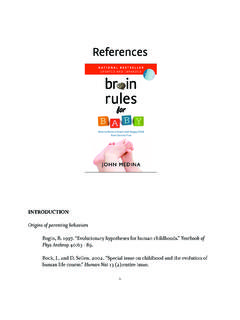Transcription of Neurological Assessment Tips
1 If a patient develops any decrease in level of consciousness, the priority is to promptly identify and treat alterations in ABCGS (Airway, Breathing, Circulation, Glucose or Seizures) that may be causing the deterioration. If the Neurological change persists despite normalization of the ABCGS, a detailed Neurological Assessment should be performed. The examination should attempt to determine if focal findings are present (suggesting a structural abnormality, such as stroke) or absent (suggesting generalized Neurological depression, as seen with sedation or septic encephalopathy). Change is the most important finding in any Neurological Assessment and should be reported promptly to ensure timely medical intervention (if warranted).
2 To ensure that Neurological findings are communicated effectively at change of shift, nurses should perform a Neurological examination together with the oncoming shift. Propofol may be used to sedate patients with brain injury to facilitate rapid awakening and Assessment . Remember that propofol does not provide analgesia, and pain can raise intracranial pressure. In patients with brain injury due to multiple trauma, analgesia should be provided with sedatives. Propofol should not be stopped for routine Neurological Assessment unless approved by neurosurgery. Brain rest is often the goal in the first 48 hours following brain injury.
3 Steps to Neurological Assessment in the ICU:1. Assess mental status/higher function:A. Conscious patient:1)Talk to patient and ask questions that avoid yes/no answers if possible. Evaluate orientation, attention, coherence, comprehension, memory/recall Screen for delirium Identify symptoms such as headache, nausea or visual problems2)Determine Glasgow Coma Scale (GCS)B. Altered patient:1)Assess for response to:a)Normal voiceb)Loud voicec)Light touchd)Central painDifferentiate between higher function of awareness ( , purposeful movement, recognition of family) versus arousability (grimacing to pain only).2)Determine Glasgow Coma Scale (GCS) whether seizures could be presentLook for evidence of seizures (non-convulsive seizures should be considered in patients with unexplained decrease in level of consciousness or failure to awaken, especially after TBI or stroke).
4 Cranial Nerves (see next pages for CN and brainstem testing)In rapid neurologic examination, pupil Assessment is the primary CN examination. Loss of reactivity to direct and consensual light with pupillary dilation suggests compression of CN III (top of brainstem). Fixed and pinpoint pupils suggests lower brainstem dysfunction in the area of the pons. motor function (look for asymmetry)Evaluate movement in response to command, with and without resistance if possible. Observe spontaneous movement or response to pain if unable to sensory function (look for asymmetry)Test response to pin and light tough; patient must be able to obey; important part of spinal cord testing for at risk patients (trauma with uncleared C Spine, ASCI, thoracic aneurysm).
5 Cerebellar functionPatient must be able to obey; cerebellum responsible for ipsilateral coordination of of rapid alternating movement can be performed in ICU. Examples: 1) examiner holds finger up and asks patient to touch his/her own nose, then the examiner s finger. 2) Have patienttouch each finger tip to thumb tip in Assessment TipsCN ICN IICN IIICN IVCN VICN VCN VIICN VIIICN IXCN XCN XIICN XIV1V2V3 CRANIAL NERVES: The cranial nerve are arranged in pairs in descending order along the brainstem. There are 3 sensory nerves (CN I, II and VIII), 5 motor nerves (CN III, IV, VI, XI and XII) and 4 mixed motor and sensory nerves (CN V, VII, IX and X).
6 Cranial nerve dysfunction produces ipsilateral effects (same side)* All cranial nerves can be tested in an awake and alert patient who is able to participate in the examination. Only some of the cranial nerves can be tested in patients who are unconscious. These are tested by stimulating a sensory nerve and watching for a reflex motor response. When brainstem herniation syndromes occur, cranial nerve function can be lost in descending order (if the origin of the injury is above the tentorium). CN I and II are located above the brainstem; CN III through XII are located along the brainstem. CN XI (accessory) has its origin from the spine, rising up to give the appearance of a CN located between X and XII.
7 CN III is located at the level of the tentorium; sudden loss of CN III function (decreased reactivity and dilation of the pupil) suggests herniation at the top of the brainstem. This is the most important CN to test in critical care; sudden decrease in function is an urgent finding. Asymmetrical loss of any CN function may indicate unilateral compression Because of their arrangement along the brainstem, most of the brainstem reflex tests involve testing cranial nerve function.*for accuracy, CN IV (the only cranial nerve that arises form the posterior cord) provides contralateral function. Because of its length and point of crossing, compression typically occurs after crossing, therefore, symptoms remain ipsilateral.
8 This is rarely a significant CN to test in the critical care population. Branches of CN V:Tested together by assessing for conjugate eye movement in vertical, horizontal and diagonal FunctionTesting in ICU(assess symmetry)IOlfactory (sensory) Smell(may be injured with anterior basal skull #) Block one nareand test ability to smell from contralateral nare (cloves,coffee) Dysfunction causes food to lose its tasteIIOptic(sensory) SightSight information from eachof the 4 visual fields of each eye travels via a unique pathway between the retina and brain. One or more visual fields can be lost due to damage anywhere between the retina, optic nerves or brain (occipital lobe).
9 Recognition of objects or people. If alert,ability to see objects in all 8 fields. Eye chart, Reading Detailedtesting post ICU discharge Light reflex tests CN II and III Remember to test with glasses onIIIO culomotor (motor) Pupil constriction Eyelid opening Eye movement (all directions except those of CN IV and VI; CN III, IV and VI tested together) Lightreflex Eye opening Ability to follow an object upward, horizontally toward nose, straight down and downward/laterally IVTrochlear (motor) Downwardand nasal rotation of eye Abilityto follow object in downward, nasal field of visionVTrigeminal (sensoryand motor) Primarily Sensory: feelingto face in three branches: V1(forehead, cornea, nose), V2 (cheeks), V3 (jaw) Motor.
10 Chewing Light touch and pin sensation to forehead, cheek and jaw region Ability to raise cheeks (chew) Corneal reflex tests V1 branch of CN V (sensation) and CN VII (blink) VIAbducens (motor) Horizontaland lateral movement of the eye Ability to followan object in the horizontal/temporal gazeVIIF acial (motorand sensory) Primarily Motor: Facemovement Eyelid closure Tearing of eye Salivation Sensation/taste to front 2/3 of tongue Eye closure Face movement (smile, assess nasolabial fold, show teeth) Inability to wrinkle forehead on side of facial weakness indicates CN VII dysfunction; forehead wrinkle preserved in strokeVIIIA uditoryor vestibulocochlear (sensory) Hearing Balance Vestibular system sends information about head movement to pons.











